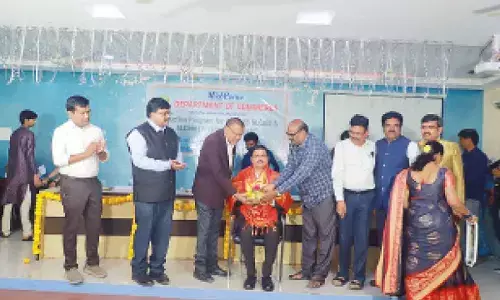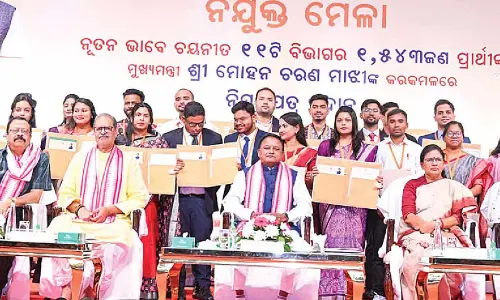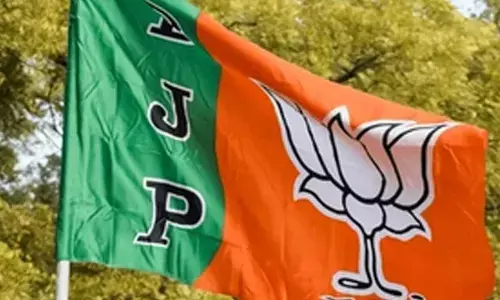Skilling India

Andhra Pradesh government announced its intention to skill two crore youth in next decade. The Telangana government launched Telangana Academy of Skill and Knowledge (TASK). Prime Minister Narendra Modi is talking about transforming India into a skill India. The World Bank has pointed out that the economies are not just built by physical and natural resources alone.
Studies indicate that in India less than 20 per cent youth can find jobs straight after completing their education
Andhra Pradesh government announced its intention to skill two crore youth in next decade. The Telangana government launched Telangana Academy of Skill and Knowledge (TASK). Prime Minister Narendra Modi is talking about transforming India into a skill India. The World Bank has pointed out that the economies are not just built by physical and natural resources alone. In the knowledge-based global societies of the 21st centuries, economies are increasingly built upon human resources.
India enjoys the demographic dividend which means the working age population constitutes a major share of overall population. But, unless we impart education and skills to our young population, the demographic dividend would turn out to be a demographic nightmare. Studies reveal that hardly 10 per cent of India’s engineering graduates are employable. While the society requires quality workmen like electricians, plumbers, mechanics, drivers in a large number, unemployment stares at us.
The nation wants a large number of quality teachers. There is a wide gap between skill demand and supply. Unemployment is a result of lack of skills rather than absence of economic opportunities. Studies also indicate that in India less than 20 per cent youth can find jobs straight after completing their education. Skilled work force in India is only meagre 2 per cent, as compared to 96 per cent in South Korea, 80 per cent in Japan, 75 per cent in Germany and 70 per cent in Britain.
India is giving manufacturing a massive impetus as we lag behind China, Thailand, Japan , Korea and other nations in terms of this sector‘s share in the overall national income. The manufacturing revival cannot be a reality without creating a vast pool of skilled workforce. Our education system is creating job-seekers rather than job-givers. Our youth should be trained to convert a good idea into a good product or good service perform or perish was the earlier slogan.
But, now innovate or perish is the new mantra. The skill mission should therefore be embedded into an innovation eco-system. The 12th Five Year Plan approach paper rightly emphasized, “skill development is critical for providing decent employment opportunities to the growing youth population and necessary to sustain the high-growth momentum”.
Skill formation has to be mainstreamed in the formal education system. Skill creation outside the formal education needs coordinated action and innovative approach. Gaps in skills ecosystem have to be identified and plugged. Skill formation should take place in a demand-driven manner. Curriculum for skill development has to be reoriented on a continuing basis to meet the demands of the employers/ industry and align it with the available self-employment opportunities.
Accreditation and certification system has to be improved. There is a need to establish an institutional mechanism for providing access to information on skill inventory and skill maps on a real time basis. A sectoral approach is required for the purpose with special emphasis on those sectors that have high employment potential .There is a need for establishing flexible learning pathways integrated to schooling on one end and higher education on the other.
















